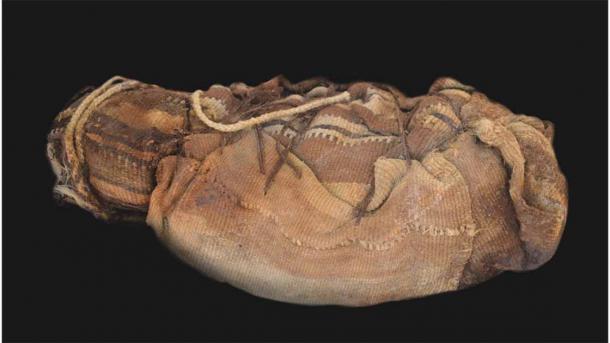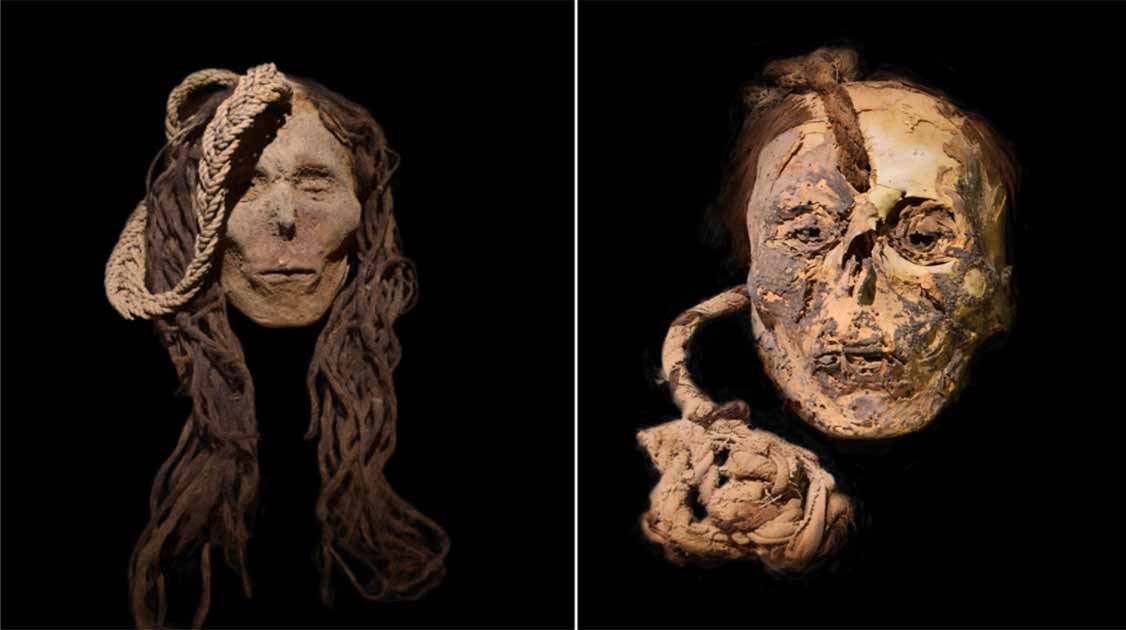Trophy Head Shows Child Victim Consumed Psychedelic San Pedro in Peru
Psychoactive substances and child sacrifice seem to come together more often than not when it comes to examining the Mesoamerican cultures and their history. Earlier this month, 76 child sacrifice victims with their hearts ripped out were found in Peru, and to now add to that tally is a Nazca child’s trophy-head, examined in a new study. The single hair plucked from the child’s head reveals that they consumed a psychoactive cactus, amongst other substances, prior to execution, as a part of the ceremonial process!
Oldest Known San Pedro Consumption
The new study published in The Journal of Archaeological Science reveals the oldest case of the consumption of San Pedro cactus, containing mescaline, and probably Banisteriopsis caapi, the main compound in ayahuasca. Ayahuasca is a hallucinogenic beverage containing harmine and harmaline, two compounds that are used in modern antidepressants.
The ingested items also include coca leaves, a source of the psychoactive substance cocaine, which is fairly common in these parts. The San Pedro cactus, renowned for its strong hallucinogenic properties was used by the indigenous Mesoamerican civilizations in traditional medicine and rituals. On top of this, a variety of grave goods were found at the burial sites, which include textiles, ceramic pots, weaving tools, and a chuspa – a type of bag used for carrying these coca leaves.
- Ritually Sacrificed Inca Kids Fed “Soothing” Coca and Caapi Cocktails
- Kill or Cure: The Evolution of Addiction Treatment Through the Ages

Chuspa bag with coca leaves from San Francisco cemetery (D. Socha / Journal of Archaeological Science)
Trophy Hunting and Child Sacrifice
The child’s head was severed at the neck and made into a kind of trophy. “The ritual of headhunting was widespread in the pre-Hispanic Andes from the Pre-Ceramic Period (1800 BC),” write the authors of the study.
"The trophy head is the first case of the consumption of San Pedro by an individual living on the southern Peruvian coast," study lead author Dagmara Socha, a doctoral candidate in the Center for Andean Studies at the University of Warsaw in Poland, who told Live Science. "It's also the first evidence that some of the victims who were made into trophy heads were given stimulants before they died."
The child’s head was one of 22 human remains associated with the ancient Nazca (or Nasca) society. The Nazca was an archaeological culture flourishing in southern Peru from c.100 BC to 800 AD in the river valleys of Rio Grande de Nazca drainage and the Ica Valley. The individuals in question were excavated during the Nazca project, a long-running archaeological program that had begun all the way back in 1982. The age and sex of the child still remain undetermined.
- Drugs in Ancient Cultures: A History of Drug Use and Effects
- Archaeological study explores drug-taking and altered states in prehistory

Hair sample testing from this child mummy revealed a cocktail of potent drugs had been ingested. (D. Socha / Journal of Archaeological Science)
A Trade Network and Usage of Hallucinogenic Plants
"It was quite interesting to see how many people had access to [these plants]. We also wanted to discover the route of the trade of some of these ancient plants. For instance, the coca leaves were not cultivated on Peru's southern coast, so they had to be brought there from either northern Peru or the Amazonian region,” added Socha.
To their credit, the researchers were able to trace an extensive trade network by tracing the age of the drug use – 100 BC to 450 AD, a span of over half a millennium. These finds come despite a massive handicap, which is an absence of a written record from this period, leading to archaeological investigations being the only source of discovery.
The trade network then developed by understanding how different cultures used different plants for their various needs, including for medicine and ‘visions’. Earlier studies have shown that the plants were traded up and down the Peruvian coast all the way up to the Amazon. Recreational use was limited, if not completely absent from archaeological excavations. Rather, usage was very specific, either for medicinal or ritual purposes.
This raises the question of also how frequently these plants were being used in Nazca culture, even medicinally or ritually. "We actually don't know how often these [plants] were being used. In the case of San Pedro, it's not well preserved in an archaeological context, and in the case of the coca leaves and Banisteriopsis caapi, they were never found to be growing in this region during that time period,” concluded Socha.
Top image: Trophy heads from Nazca, with the child found to have consumed psychoactive drugs. Source: D. Socha / Journal of Archaeological Science
By Sahir Pandey
References
Nalewicki, J. 2022. Nazca child ingested psychoactive cactus just before ceremonial death in ancient Peru. Available at: https://www.livescience.com/psychoactive-plants-peru-trophy-head.
Socha, D.M., et al. 2022. Use of psychoactive and stimulant plants on the south coast of Peru from the Early Intermediate to Late Intermediate Period. Journal of Archaeological Scene, 148. Available at: https://doi.org/10.1016/j.jas.2022.105688.




















Comments
Now, wait a minute! Modern drug testing says it take 7 days for a drug to show up in the hair follicle. So, let’s move to theory #2, at least on this one.
Nobody gets paid to tell the truth.
The practice continues today.. the blood of the innocent is always powerful.. n never worth it
infinitesimal waveparticles comprise what we call home the earth
manipulatable by thought ability supressed in humans since birth